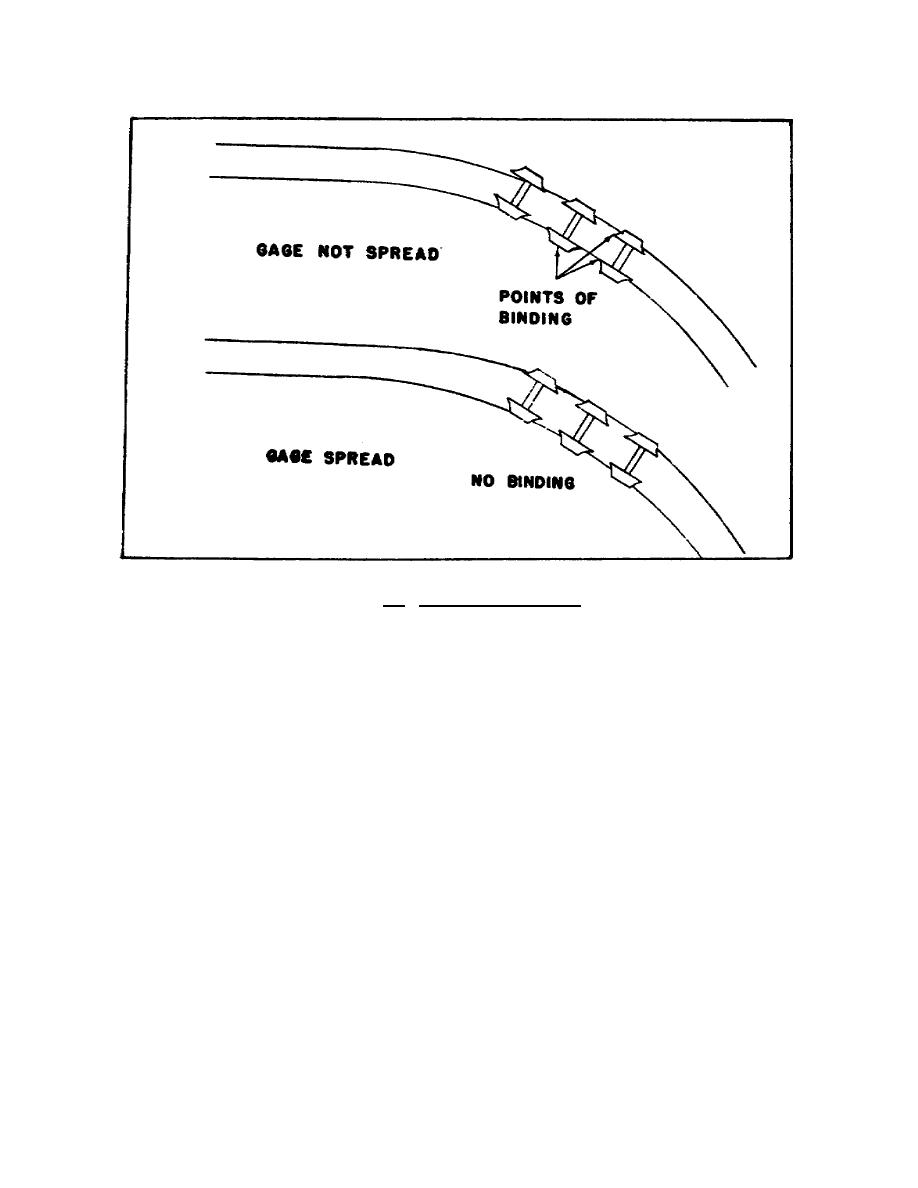
Figure 1.7. Gage on Sharp Curves.
You read earlier that the gage of locomotives and rolling stock must match the gage of
the track over which it is going to run. However, this is not literally true. The gage of rail
equipment is invariably slightly less than that of the track. The difference is maintained to insure
a tolerance in case the track gage should accidentally be slightly narrow and to further reduce the
effect of binding on curves.
On high-speed lines, some railroads have specified a slightly narrower gage. For example,
on one major commercial railroad specifications for standard track require a gage of 56 3/8
inches on all tangents where trains are expected to operate at speeds in excess of 50 mph. In
high-speed operation, the freedom of rail equipment to move a small lateral distance between the
rails results in a rough, uncomfortable ride for passengers and is destructive to track and
equipment.
1.7.
CROSS LEVEL AND SURFACE
The cross level is the height or elevation of the two rails, making up the track, in relation
to each other. The cross level of a track, among other things, affects the way a train moves over
the rails. Good maintenance requires proper cross level, as illustrated
13


 Previous Page
Previous Page
